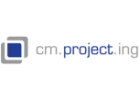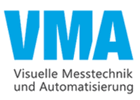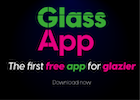As institutional discussions on the revamp of the Packaging and Packaging Waste Regulation (PPWR) continue to unfold, we – as the container glass industry – have taken note of the policy recommendations set out in Zero Waste Europe (ZWE)/RELOOP’s paper “Reinventing Glass”.
We agree with Zero Waste Europe/RELOOP on a number of issues, but we categorically refute the statement that glass would be given a so-called “free pass” under current PPWR plans. Here’s why.
Glass is already undergoing a climate-neutral revolution
European container glass manufacturing is a genuine circular model for packaging – one that perfectly fits the EU’s ambition to build a circular economy. By 2050, the container glass industry is also committed to achieving a major revolution in making glass that is fit for this circular and climate-neutral economy. This goes beyond individual business commitments and roadmaps to reflect a sustainable business transformation with the full weight of the glass industry behind it – because under the EU Climate Law, decarbonisation is not an option, but an obligation.
For this reason, ZWE/RELOOP‘s claim about the “incompatibility [of single-use glass] with the climate agenda” is not only untrue, but incoherent with EU law. The claim is based on a ZWE study commissioned from Eunomia on “Decarbonisation of Single Use Beverage Packaging”– a study that is predicated on assuming decarbonisation is a choice for industry, rather than it being mandatory for all industries to maintain the right to operate in the EU. It is also based on partial, unchecked, and inaccurate assumptions. We are addressing all these in a separate technical analysis (available here).
It is also extremely short-sighted for an NGO such as Zero Waste Europe to completely ignore plastic pollution but continue to play the plastics game by only maintaining a narrow focus on CO2 emissions and weight as indicators of sustainability. Their incomplete study and recommendations do not take into account all other key indicators such as closed loop recycling, food quality preservation and migration of substances from food contact materials that are crucial components of sustainable packaging. As ZWE even states in one of their own recent reports “How FCM safety is fundamental to sustainability”:
“Safety’ and ‘sustainability’ concepts are directly interlinked: in order for food packaging to be truly sustainable, it needs to be safe for both human and environmental health.”
Offering safe, sustainable and circular packaging is at the heart of what the container glass sector does. For this reason, we have welcomed the European Commission’s ambition to further promote the circularity of all packaging in the PPWR proposal. We support PPWR measures that will effectively contribute to the following objectives (see here our full PPWR position paper):
Fair effort sharing on packaging prevention by all packaging materials, with material-specific targets;
90% collection for recycling rate, with emphasis on high-quality and closed-loop recycling for higher uptake of recycled content in glass packaging;
All packaging placed on the EU market to be recyclable in practice and at scale by 2030;
Reusable packaging must be a complementary option to one-way packaging.
Material-specific waste reduction targets will avoid incentives to choose plastic
We fully agree with Reloop and Zero Waste Europe that “it is crucial to avoid material substitution” and that material-specific waste prevention targets should be set to ensure fair effort sharing by all packaging materials. This is the only way to prevent packaging, in particular plastics, from ending up in the environment. For our part, we are fully committed to improving the sustainability of our products and to further reducing the weight of our packaging.
In fact, we have relentlessly shared our concerns that introducing packaging waste reduction targets that are not material-specific would cause severe market distortions, providing incentives to businesses to shift from heavier but circular materials (like glass), to lighter but difficult to recycle or reuse packaging materials. Instead of reducing environmental impact as intended, this move could even result in increased adverse environmental consequences, due to an increase in plastic pollution.
The PPWR Impact Assessment shows that the proposed overall reduction targets are not material-neutral, as they will not ensure that all packaging materials contribute individually, equally and fairly to waste reduction. Instead, the proposed overall targets would result in a major increase in plastics and significant decreases of all other packaging materials (including glass). This can be seen in the European Commission’s own impact assessment, with a projected 4% reduction in packaging waste generation in 2030 compared to the 2018 baseline leading to a 17.41% increase in plastic packaging waste. Is creating more plastic waste really what the PPWR revision set out to achieve?
Ambitious 90% collection targets can boost recycled packaging – unlike DRS
Unlike recycled content targets, optimised collection, sorting and recycling technologies will improve both the quality and quantity of recycled glass, and ultimately ensure higher recycled content. This commitment to high-quality closed loop recycling is shared by glass producers across Europe.
Post-consumer recycled glass is the most important raw material used to produce new glass packaging: today, the average glass container made in Europe contains 52% recycled content . Introducing recycled content targets under PPWR is a way to stimulate demand for materials that are not effectively recycled – particularly plastics, due to technical and market limitations directly linked to their inherent properties. However, for other fully recyclable Permanent Materials such as glass and metals, there are no limits to increasing average recycled content other than availability. Furthermore, unlike many other waste streams there is a high demand for recycled glass, where demand typically exceeds supply.
That’s why the container glass industry shares an ambitious commitment to drive more higher-quality recycling across the EU. Glass packaging is already widely recycled in Europe, where the latest average EU collection for recycling rate is 80.1% (2021) and the vast majority is reprocessed back into bottles and jars (91% of recycled glass waste is recycled in a closed loop packaging manufacturing process, according to one 2023 study). Yet we believe more can be done. In 2020, we launched Close the Glass Loop to bring together glass manufacturers, recyclers, food & beverage producers, EPR schemes, and local and regional authorities to improve the quality of recycled glass, and achieve a 90% average EU collection rate of used glass packaging by 2030.
Through the PPWR revision, we also call for the introduction of a mandatory 90% collection for recycling target for 2030 for glass. Separate collection and sorting are a prerequisite to guarantee high-quality recycling processes and to meet proposed recyclability criteria.
Conversely, including a selective range of one-way glass packaging products in Deposit Return Schemes (DRS) is NOT the right solution to achieve 90% overall collection for recycling for all types of glass packaging. Instead, an insistence on imposing DRS could put glass collection and recycling at risk (see why in our dedicated position paper). Furthermore, there is no evidence to support ZWE/Reloop’s claim that implementing a DRS for one-way glass containers results in ”a shift to more reuse”. Over the years, there has been a general reduction in the sales of reusable packaging across Europe across all three relevant product categories (beer & cider, soft drinks and bottled water) irrespective of whether the country operates a DRS for one-way containers. To this end, we support improving existing Extended Producer Responsibility (EPR) and municipal waste management systems for one-way packaging to make collection simple for the consumer, and optimal for the recycling value chain.
All packaging placed on the EU market should be recyclable by 2030
We welcome the European Commission’s ambition to require that all packaging placed on the EU market must be recyclable, based on harmonised criteria for ‘recyclable packaging’ to ensure that all packaging is sufficiently and effectively collected, sorted and recycled – in practice and at scale. We support new ‘Design for recycling’ criteria and A – E recyclability performance grades, as a basis for the eco-modulation of EPR fees. Yet we believe there are several missed opportunities to transition to a fully circular economy for packaging, and actively call on EU decision-makers to raise the ambition of the PPWR:
All packaging should be recyclable already as of 2030;
The qualities of secondary raw materials should be differentiated, with a strong definition of high-quality recycling;
The quantitative description of the recyclability performance grades should be complemented by a qualitative description, with grade A rewarding packaging that can be recycled multiple times and feed a closed material loop scheme.
These requirements will apply to all packaging materials and will enhance the recycling of glass packaging as well.
Returnable glass is already a market reality, but not the only one
Reusable glass has been a reality in Europe for decades, if not centuries. Glass dominates the refillable beverage containers market, where it accounts for 22% of packaging placed on the market in the key segments of beer, soft drinks and water (representing 96% of refillable beverage containers in 2017).
Reusable packaging can be an efficient solution for products in a short supply chain, and an important waste prevention measure. Yet it is not always suitable – or the optimal solution – for all product categories when transport distances, use and consumption patterns are considered. Any move towards reuse must be implemented in an economically viable and environmentally sustainable way that would bring tangible benefits, compared to recyclable one-way packaging.
Decarbonisation of glass production must continue at pace
By 2050, our industry will be making climate-neutral glass in a circular economy – this is non-negotiable.
Brands and retailers alike have committed to ambitious sustainability goals, and as a leading packaging material, we know we play a big part in this transition. There is no single European roadmap for decarbonisation, but many national and individual company strategies and commitments exist under a common ‘Furnaces for the Future’ vision. Industry is already exploring, testing and implementing many disruptive paths to decarbonise the production process, resulting in glass that is already 70% less energy-intensive and emits 50% less CO2 than fifty years ago. This progress will continue, and European glass companies will continue to invest to manufacture glass products fit for a resource-efficient, low-carbon society.
To get there, shared efforts will be needed to support systemic change. Reducing our carbon emissions is the biggest challenge of our time, and requires a clear, stable political and legislative framework, along with support and collaboration with the industry to explore innovative solutions that require the security of renewable energy supplies at competitive costs.
Once this energy transition challenge is complete, glass – whether recyclable or refillable – will be in a league of its own: a packaging material that meets the needs of brands, businesses and retailers, while being better for people and the planet.
Better for business, because it offers a circular packaging material that meets the demands of everyday consumption in a sustainable way. Better for people because it remains inert no matter how many times it is recycled, making it safest for consumer health and best to preserve quality and taste of products. And better for the planet, because glass is not made of oil, but materials sustainably sourced from nature – such as sand, soda ash, limestone and recycled glass – and can be endlessly recycled, without loss of its intrinsic properties.

























